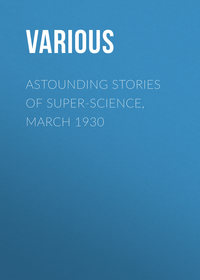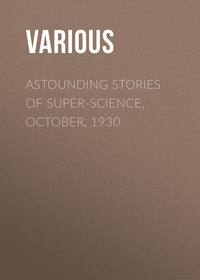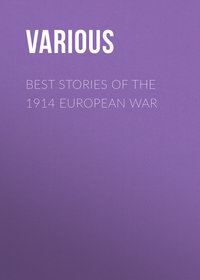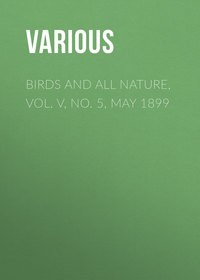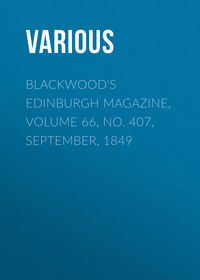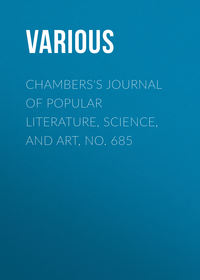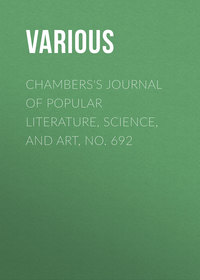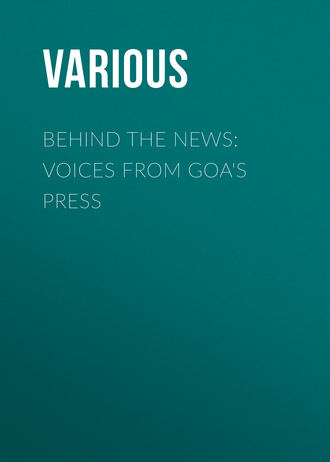 полная версия
полная версияПолная версия
Behind the News: Voices from Goa's Press
I met Rajan Narayan only once; but then it was hardly a meeting. Rather, I saw him from a distance at a midnight carnival in Panjim. After the edition was over, my NT colleague Anthony and I decided to take a round. We saw Rajan Narayan surrounded by a group of revellers. In a red T-shirt and bermudas, with a red ribbon around his head and a glass of feni in hand, a wobbly Rajan Narayan with bleary eyes was quite a spectacle. Anthony nudged me and asked, "Can you imagine Mudaliar in such a scene?"
Never. Mudaliar was, by comparison, dapper. In fact, his first advice to me when I called on him for a job interview was to be always mindful of my reputation. "It's a small place. Everybody knows everybody. And liquor is cheap here," he had said.
I left Goa rather bitterly.
I fell out with Mudaliar over an innocuous remark in my column. I used to report the traditional cricket match between the legislators and journalists in the column in a running commentary form. That year (1989), the Legislators XI led by Chief Minister Rane trounced the Press XI, led by Mudaliar. I made a passing remark that age was apparently catching up with Mudaliar. He deemed it too personal, and stopped talking to me. There were enough people around to fan the fire; and he refused to recommend me for a promotion. One thing led to another and I soon decided that my future lay elsewhere.
But I've no hard feelings about anything now. In fact, I recall my days in Goa with nostalgia and gratitude. It was a turning point in my career and I fondly remember my association with a wonderful people. I learned many things in Goa that stood me in good stead in later life and it will always remain etched in my memory as a part of my youth.
I wish all my friends and acquaintances over there, especially Rajan Narayan, good health and success in whatever they are engaged in now! I learnt of Mudaliar's death quite recently through an e-mail. I was saddened. I fondly recall my association with him. Despite the differences of opinion that resulted in our parting of ways, Mudaliar was a thorough gentleman and working with him was an enriching experience. I cherish his memories!
Chapter 6: O HERALDo: an untold chapter
Valmiki FaleiroValmiki Faleiro, a Goa-based working journalist between 1975-83, covered Goa for national publications like The Current Weekly, the Free Press Journal group and the Indian Express. He was Staff Reporter with the West Coast Times and as a freelancer, contributed to various journals like The Navhind Times, Goa Today, The Sun Weekly, Newstrek, Detective Digest, Mirror, Newsmag.
The early 1980s. Happy days were here again for Goa's first English-language daily, The Navhind Times (NT). After a brief challenge to its other crucial attribute, that of being the only English-language daily, from Goa Monitor in the late 1960s, NT had just staved off another. West Coast Times, launched July-1978, blazed a luminous trail in quality journalism but, like a comet after a brief showing, vanished into oblivion.
NT was back to its snug-seat monopoly.
A slave of the economic thought of Adam Smith, David Ricardo and John Stuart Mill, or our own Nani Palkhivala, JRD Tata and M.R. Pai, I have been a votary of free enterprise and competition – and allergic to monopolies. A monopoly is bad for any consumer. And infinitely worse in a crucial commodity that helps form a society's opinion.
I had been speaking to some wealthier Goans, my idea of launching a broadsheet weekly, which would, over a period, be converted to a full-fledged daily. A tabloid (like Goa Monitor) did not appeal; and mere excellence in editorial content and quality printing (like West Coast Times) did not suffice. What mattered was the capacity to financially sustain a daily newspaper (by absorbing annual losses even while continuing to maintain quality) until the product turned round, which could take some years. That kind of money in Goa only mineowners had – like all of Goa's major dailies! So my idea was start small, stay around till you built adequate advertising recognition and support, and only then convert to a daily – at a fraction of a daily's budgetary requirement and without having to own printing facilities from day one.
Even then, not many Goan businessmen I was in touch with were willing to risk any substantial venture capital.
It was around this time, June 1983, if I recall the month correctly, that a mutual friend in the printing business in Mumbai and Goa, told me that A.C. Fernandes, Patrao of the Panjim stationers Casa J.D. Fernandes, was toying with the idea of an English-language daily. The mutual friend suggested I discuss my ideas with Fernandes.
A.C. Fernandes wasn't a mineowner, not yet anyway, but I had heard he was a shrewd businessman. He purchased Goa's only extant Portuguese-language daily, O Heraldo, not so much for love of the language or its dwindling local readership, but evidently for the intrinsic value of its press and its centrally-located premises. It was said he took full advantage of the daily's lable, in those days of the Permit Raj, to import (from Italy?) a Lino typesetting machine, which actually was used for all and sundry job works of the business house – even as the major part of good ole O Heraldo continued to be composed by hand!
But what the heck! A shrewd and street-smart man, I reckoned, would any day be better than a cash-filled dumbo. Moreover, what Patrao may have lacked by way of adequate resources was made up in having his priorities right. His love Goa and her way of life, his concern about increasing corruption in Goa's polity and aspiration for rightful honour to the mother tongue, were transparently genuine.
The mutual friend arranged our introductory meeting, over lunch at the A.C. Fernandes residence at Santa Cruz one rainy Sunday. The sharp-eyed (and, as I was later to discover, sharp-tempered) Patrao, his demure wife and sons, John, Raul and Oswald, with the mutual friend and I sat across a carefully laid table. I spoke about WCT and why it failed, my ideas for a successful daily and my business plan for such a venture. A.C. Fernandes (the sons, those days, played second fiddle), I think, was impressed. And thus began a relationship, where I did my best to midwife a second English-language daily for Goa – or almost.
The search was on for an Editor. Ads had been placed in the major national dailies. Surprisingly, about a dozen pros were willing to come to Goa! But the best were out of reckoning, they expected salaries the kind Patrao never figured existed! Ervelle Menezes was the best bet. When I covered Goa for the Indian Express a couple of years before, Ervelle was a Chief Sub at IE's Mumbai edition. After Bhat, the then News Editor, died in harness, Ervelle had taken over as the News Editor and was in that position at this point of time.
From deep within, I hoped that Ervelle it would be to launch the Herald as its founding editor. A professional and a Goan, he was a suitable choice. For me too: I had been, by now, ordained to be the to-be newspaper's Chief Reporter, on insistence of A.C. Fernandes and his son Raul. My own plan had been to be with them till the day the newspaper took off; I was, by this time, already getting into business, developing family-owned land at Fatorda, Margao.
I never met or spoke to Ervelle about this job. Raul had, and I gathered that Ervelle was indeed interested. I was aware that he had come to Goa to check things out. Ervelle, of course, is around and it would be for him to say why he declined. What I surmised at that time, though, was that Ervelle must have been put off by local opinion about A.C. Fernandes' financial capacity to sustain a daily newspaper to the stage it generated its own resources. Ervelle of course explained it had something to do with his mother's illness.
Ervelle's decision was a great setback to the plan – there was just one last application left in Raul's file of responses for the Editor's post. If I had not urged its consideration earlier, it was because the applicant lacked experience with a daily newspaper. The applicant's only exposure to a daily was a brief stint at the Financial Express – not a mainstream newspaper. His c.v. spoke of experience at Mirror. But then, magazine journalism is not the same as what goes into the making of a daily newspaper. Moreover, the applicant wasn't even into journalism for quite some time: he presently dwelt in the dreary world of advertising and public relations, at one of Mumbai's lesser-known firms. Such was the irony.
What the NT had been to Goa's English readers, a Hobson's choice, Rajan Narayan's application now was to Raul and me!
Fearing that Patrao may get discouraged enough to abandon the newspaper idea, my airflow changed and I convinced A.C. Fernandes that we invite the man and take a closer look at his credentials. Rajan was lodged at Panjim's Hotel Mandovi (I wonder if he ever stayed there again, used as in later years he was to offered or obtained five-star hospitality across Goa's coast!) Patrao, Raul and I met him. The parleys went so long in the afternoon that there was no restaurant open for lunch. Rajan and I had to make do with puri bhaji at Cafe Real (I wonder, again, how he'd have raved and ranted in his latter-day popular Sunday column, Stray Thoughts . But beggars were not choosers, those days.)
To me, Rajan came out as a clever and crafty mind. But again, what the heck! At that point of time, the NT had a clever and resourceful skipper at its helm. I had known Bikram Vohra from my days at the Indian Express. When marched to Ahmedabad as Resident Editor of the IE's local edition, to fend off competition from the formidable Times of India, one could count on Bikram to come up with extremely off-beat ideas: he painted the town red with the slogan, Keen ahead of the times, read the Express! To compete, we would need a crafty mind and I though Rajan fitted that bill pretty well. From me, Rajan wanted to learn more about Goa – its history, economy, religions, cultural mix the background of its English-language press and, of course, of the A.C. Fernandes clan.
Rajan was obviously impressed with my views on how the newspaper should be. He said he was immensely happy to have me around, that things would be difficult talking to A.C. Fernandes and Raul alone. He was also glad I would be the newspaper's Chief Staff Reporter. He pleaded that I stay back in Panjim that day, so we could discuss in greater detail. The kid that Raul then was, also decided to stay back. We sat in Rajan's Mandovi room, drinking his favourite Old Monk (not Raul, then a teetotaler, I don't know if he's still one.)
We were immersed in plans and strategy, more than in the rum.
It was well past 9 p.m. and there was a knock on the door. Being closer, I rose to answer, but obsequious as Raul was, insisted on doing that himself. Raul had barely opened the door when we heard the sonics of a resounding slap across the face. A furious A.C. Fernandes hollered, "Mama and I were so worried about you." (It seems those days the Fernandes household was being terrorized by another Fernandes household in the Santa Cruz neighbourhood, so much that no member of the former went home unaccompanied after dusk; if late, a group of employees from the shop or press escorted them home.) That was among Rajan's first personal impressions of his future employers!
Twenty years is a long enough span for perceptions to change. But I believe my opinion carried the weight of near finality with the Patrao. Rajan Narayan would edit the to-be Herald.
Next morning, we met with the Fernandes, again to work out a blueprint for the newspaper's editorial requirements, right down to a list of furniture! From the way bare essentials were being economized, Rajan privately kept asking me whether these guys could really run a newspaper. I kept assuring him they would. We agreed that together we would keep prodding them if they wavered. On the way back to the hotel (he was returning to Mumbai that day), Rajan said I was the only person he could trust and would I please mail him on a weekly basis on the progress of implementation of the agreed blueprint.
This was essential, he explained, because as discussed and agreed, he would be asking some friends in Mumbai to quit their secure jobs to join the Herald and he didn't want to put people in trouble if the paper was, after all, not going to take off. During the period to the run up, I wrote and kept Rajan informed of the progress and, in reply, he kept reminding me to press the management on the tasks that remained unfulfilled. Quite a balancing act, for me!
In the course of such weekly back and forth postal exchanges, Rajan asked for my reiteration that I would stand with them as one – if ever the management acted funny with any of them in future. I presumed he was concerned with risking his Mumbai team's future. I had mentioned to Rajan earlier in Goa how the entire well-knit editorial team at WCT had quit en bloc in the face of a stubborn management vis-a-vis the workers' strike. Till now, I had no reason whatever to doubt the man's integrity. I wrote back, naively in retrospect, that I was committed to being one with the team and should one be touched, all would go – or something to that effect.
Rajan obviously didn't throw away that letter, as I had routinely done his.
In time, Rajan returned to Goa – bag and baggage. His Mumbai team was to follow once we were staffed and ready to run dummies. At the wooden-floored 1st storey Herald office opposite Panjim's Municipal Garden, work was on at a feverish pace. Rajan and I conducted interviews for 'subs', reporters and correspondents. We bagged some gifted hands – Frederick Noronha, Bosco Souza Eremita.
On the field, Devika Sequeira was to assist me with Mumbai's Sushil Silvano on the local crime beat, together with school chum Nelson Fernandes to cover sports and Lui Godinho on the camera. I roped in some old field hands from my WCT days, down to the last detail of Nandu Zambaulikar, to ferry newspaper bundles south of the Zuari!
Ticker lines were installed, typewriters and telephones put in place, and the Mumbai team arrived (I recall only S. Vaidyanathan on the newsdesk, though). The machine, finally, began to crank. It was decided we give readers a preview. One Sunday (or was it another public holiday?), a few weeks ahead of the formal launch on October 10, 1983, a special edition was given out gratis to English-language newspaper readers in Goa. The edition was packed with features, and news of the day. I wrote something on bus transport woes of the Goan commuter, if I recall right.
Dummies began rolling. Agonizingly, I began to see the penny-wise-pound-foolish dictum again at work (as I had, in the later stages, of WCT's short life.) Expensive computers had been brought in but A.C. Fernandes cribbed on appointing experienced hands as compositors. A daughter-in-law came in after her own regular office hours to help at computer keyboards. John's wife worked late into the nights.
Result was a delightful melange of howlers – which continued for a good while after launch of the newspaper. Every expense, however trivial, had to get Patrao's direct approval. If Rajan wanted a chair cushion, he'd have to convince the old man why his posterior ached! But the good news was, the rumble and stumble continued without interruption. We were close to D-day.
That was when one fine sunny morning, as I was about to cross from the Panjim Municipal Garden pavement to the Herald office across the street, Raul emerged from the stationery shop, as if casually, and waved me to hold back. He crossed the street and invited me for a cup of tea at a nearby cafe at Jesuit House, Jasmal or Jesema. Once seated, Raul developed an unusual countenance and began vaguely referring to the salary that had been offered to me (Rs.4,000 per mensem.) I imagined there must have been a family council the previous night. I reminded him that I had not asked the figure, that I had merely accepted what was offered – and that I was with them in this not for the money, but for a dream to break a monopoly. I suggested the figure could be revised.
That's when the bombshell broke. "It's not about the amount of salary," Raul stated, "it's…"
"You mean I'm not wanted here anymore?" I butted in, in disbelief. "You can take it as something like that," Raul said. I was too shocked to even ask why. Having known Rajan fairly well by now, I instinctively felt his hand in this. Didn't even feel like meeting the others at the office or the Patrao at the shop downstairs. Over the previous several months, I had worked to virtually midwife the Herald and however much I may have been, I did not wish to upset the scene when the baby's umbilical cord was about to go.
I just took the next bus home.
And on that very unpleasant note ended my brief association with a newspaper that over the last 20 years, tottered, steadied and thrived – even if in large measure on the guile and brilliance of one crafty man, Rajan Narayan.
Without doubt, the oHeraldo marked a new chapter in English-language journalism in Goa. A lot of latent young talent found expression. Investigative journalism got its fair image. Above all, the average Goan reader now had a choice, and the inherent benefits of competition. Happily for Goa, the combination at the right time of the Proprietors and of Rajan Narayan and some excellent members in the editorial team, clicked. Despite shoestring budgets and lack of official advertising patronage in the initial years, the newspaper survived, cracked a monopoly in a vital area, and will now shortly enter its 21st year of publication.
I lived and worked in Goa (for myself, of course!) during these 20 years and saw the manner in which this one man notched circulation and endeared himself to the average English-language newspaper reader, especially of the minority community. Rajan, a crafty non-practicing politico, in no time had comprehended the Goan mindset, particularly of the Cristao, as he is fond of referring.
And the brightest star in his horoscope also arrived in good time, in the form of the Konkani official language issue.
While other editors dithered, Rajan lost no time in recognizing the scope of the issue (he had the genuine backing of his Patrao of course) and almost went overboard with his undying love for Konkani, Goa and Cristaos liberally splashed all over the place, for months without end. With a 'sympathy and empathy' never before seen, the Mai Bhas formula worked magic for Rajan – as it did, I must concede in fairness, to a couple of other politicos, some with a degree of merit, like Luizinho (my namesake) and Churchill Alemao. The true heroes, however, have almost been forgotten!
In fairness, again, it must be conceded that to have run a newspaper with all of Herald's infrastructural deficiencies, was no mean feat. There must have been, in the initial stages, a lot of pain and personal sacrifice – but let's also not forget that Rajan was, those days, without the responsibilities of a family and with only a pint of Old Monk for company, and the option to return to Mumbai's drab world of advertising! He slogged, manipulated, and was rewarded with success.
What, however, happened after such undreamt success hit the head sooner than Old Monk did, is a story I must leave best to be told by many a gifted journalist, who worked with Rajan. At least one such is alas no more in our midst – Norman Dantas, son of a former publisher-partner of Goa Today. Rajan marginalized many a gifted Goan journo because he perceived them as threats to his position!
Back to my 1983 story.
It was some seven or eight months after that uncivilized Cafe Jesema or Jesmal episode that the mutual friend who had introduced me to the Fernandes revealed the truth. Rajan Narayan, my trusted senior colleague, days before the oHeraldo could hit the newsstands, showed my letter to him on the editorial team standing as one – and quitting as one if need arose – and convinced the Patrao that here was a snake already scheming to kill the newspaper before it was even born! How the intrinsic illogic of this premise – since the Fernandeses were well aware of my commitment to the newspaper – did not strike them, I shall never know. Rajan had successfully weeded out what he imagined would be future threat to his position (in this case, entirely imaginary, since he at the time knew that I was sooner or later getting into my own business).
That was the first case. Many were to follow.
Other than weeding out rivals – real or imagined – Rajan is believed to have done some pretty nasty things on the side. He played his reporters one against the other, to fetch desired coverage of stories that suited him the most. He is alleged to have killed many a good story. And all this from behind the mask of being the self-appointed keeper of Goa's conscience and probity in her public life. The powerful Stray Thoughts (which, incidentally, started off with Bolshoi the dog, borrowed from the celebrated ToI columnist and later owner/editor of Mumbai's Afternoon Despatch & Courier, Behram Contractor a.k.a. Busybee) came in handy here. I know the legion of Goa's five-star hotel GMs, practicing and aspiring politicos, or even the occasional industrialist locally mired in controversy (like Dr. Jindal, of Meta Strips, the day after some crude bombs went off at Vasco's St. Andrew's Church) will not publicly admit the manner in which they rubbed shoulders with St. Rajan!
I hear that the editor who brought a refreshing change to the English-language print scene in Goa, has finally been paid in the same coin he had paid many a subordinate – by making the subordinate's life so miserable that there was no option but to resign. Having known Rajan Narayan the way I did 20 years ago, I have my doubts whether he will leave on his own. Of course, he has already announced plans to publish a weekly in Goa – owned by the readers!! He knows the Goan mindset all too well, and has already started drumming up support via the Herald editorial columns with typical (even if more virulent) anti-Hindutva, pro-Cristao/Church writings that may border on the dangerous.
Of course, if and when Rajan Narayan does launch his weekly, he will be infinitely better placed than the Patrao, A.C. Fernandes was in the monsoon 1983. Let's wish him luck!
Chapter 7: The banyan tree: working under Rajan
Frederick NoronhaFrederick Noronha was part of the original batch of trainees with the Herald during its re-launch in 1983. In 1987, he became Goa correspondent for the Deccan Herald. Since 1995, he has been a full-time freelance journalist, writing mainly for the outstation media, including the Indo-Asian News Service. He has an active presence on the Internet, and has been for journalism training to Germany and Sweden. He is founder of the Goajourno, India-EJ and ThirdWorld-EJ mailing lists, that seek to build collaborative networks among journalists.
Reports or features critical of large companies are to be avoided by and large. No report on a corporate situation, however much it may be considered in the public interest, shall be sent to the press without prior clearance from the editor. We cannot afford to antagonise potential advertisers. – Editorial guidelines, from Rajan Narayan, May 3, 1984.
Denying journalists the right to express his or her views is like denying oxygen to a human being. – Stray Thoughts, by Rajan Narayan, September 2003, www.rajannarayan.com.
AN ACTIVIST friend argues vehemently that this editor single-handedly opens up space more than any other in Goa. Some staff who worked under him have a sneering you-don't-know-the-inside-story attitude. Others credit the man with making them what they are. For the average Goan Catholic, Rajan Narayan is virtually a hero in real life, if not the newspaper equivalent of a patron saint.
Undeniably, this is the man who has shaped Goan journalism for at least two decades, and has big plans for more. Any venture to understand the contemporary media in this small state would be incomplete without a chapter on Rajan Narayan, who at the time of writing (end-September 2003) has just announced his decision to resign from the Herald.
This writer epitomises the love-hate relationship many a journalist in Goa would share with someone who suddenly descended on the Goan scene sometime in 1983. Someone who has critically shaped the understanding of Goa, including how we see ourselves and what are the issues we define as important.




